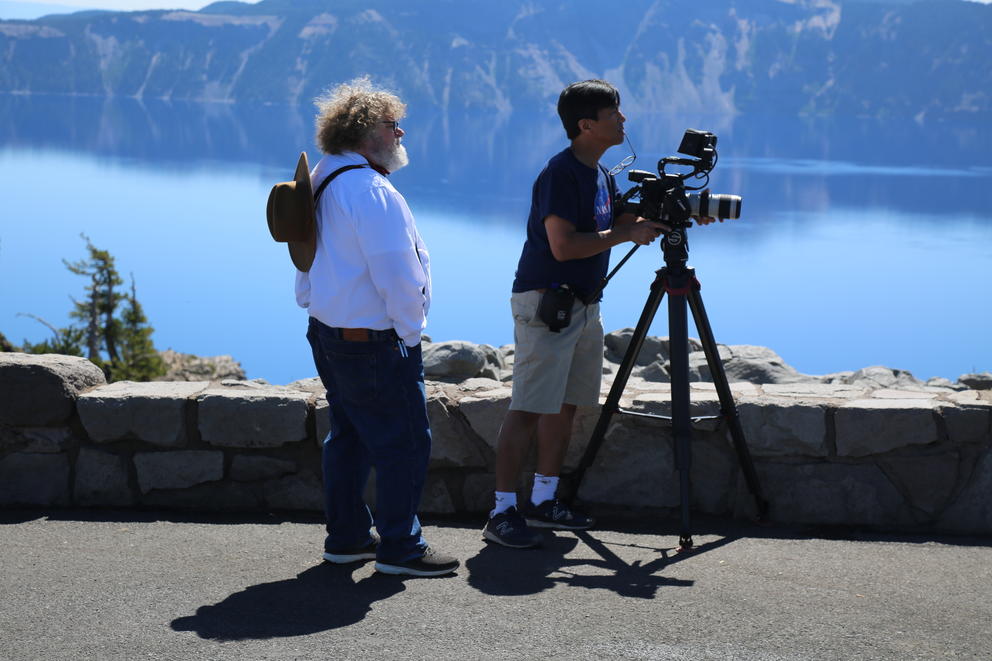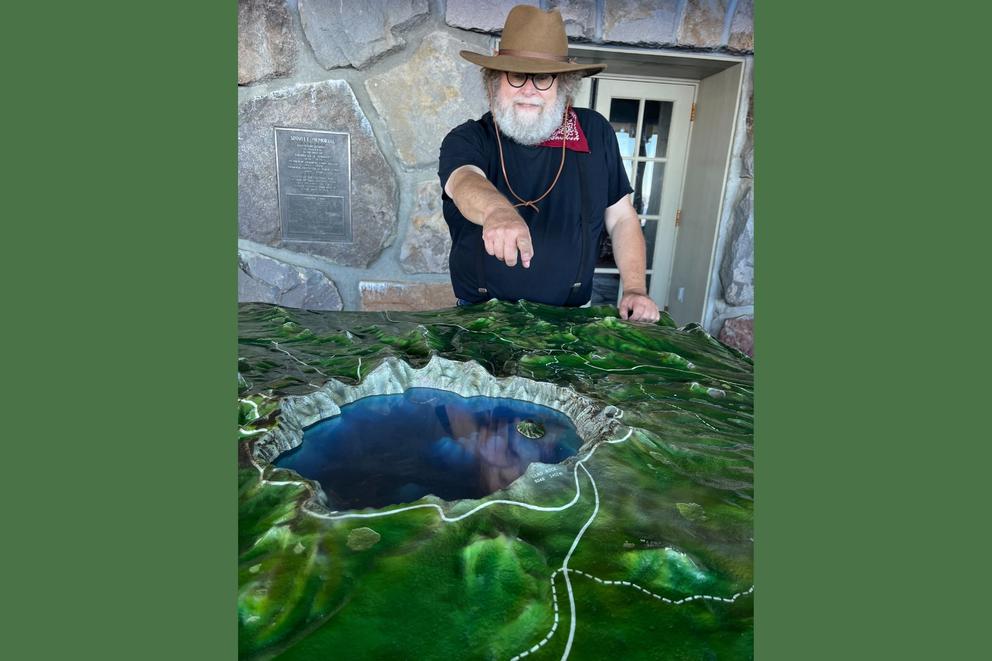I sometimes feel like we are beachcombing after a winter storm where the tides have laid out shiny wet agates and gorgeous new driftwood for us to examine. Compelling history is abundant, if you look for it. We do eight Mossback episodes a season and two seasons a year now (fall and spring), plus a half-hour anthology special in December. We pair each episode with an accompanying podcast that we hope sheds further light on our chosen subject. Northwest history being what it is, we’ll never run out of great material. It’s full of surprises.
This essay is a snippet from the Mossback's Den newsletter. If you would like to receive the weekly Mossback newsletter, consider becoming a member for just $5 a month.
Another lesson: the importance of digitizing historic archives to increase access to documents, artifacts and original source materials. In an upcoming “Upon Further Review” conversation, in which we look at what we’ve learned after an episode has aired, longtime series producer Stephen Hegg and I will talk about an exciting project the Washington State Historical Society has embarked on to make the extraordinary work of Northwest photographer Asahel Curtis (1874-1941) available. Crosscut is partnering in the effort — keep an eye out for exciting new projects to come.
As for cataclysm, heroism, racism and the other stories referred to, I learned something from each of them as well.
For a cataclysm, it would be hard to beat the explosion of Mount Mazama nearly 8,000 years ago. The volcanic eruption — located in what is now southern Oregon — is estimated to have been about 50 times as large as that of Mount St Helens in 1980. Mazama was the biggest Cascades blast in the past 600,000 years — yesterday, basically, in geologic time. It spewed deep ash throughout the region, up to 16 feet in places. It was witnessed by Indigenous people whose lives were disrupted and whose memory of the event was passed down through the millennia. What did it mean to people who witnessed the event and lived to tell about it?
We spent time filming at ground zero this summer — the beautiful Crater Lake, a remnant of the blast. It’s an awesome sight that never disappoints. The Mazama eruption also produced a less-glamorous physical marker that helps us understand the past. Beyond the lake’s serene blue water a layer of Mazama ash was laid down, blanketing the region. It can be used to reliably date events by archaeologists, anthropologists, historians and geologists. It can date sites of early peoples here and give us a better understanding of the sequence of natural and human history.
As to heroism, it’s hard not to credit the U.S. Army fliers who launched the first successful around-the-world flight from a small airfield in Seattle 100 years ago this spring. Our episode looks at the four planes and their two-man crews who took off from Lake Washington in open-cockpit biplanes without parachutes, life vests or radios. For the U.S., it was a show of power in aviation and global reach. The aircrafts hopscotched around the globe for six months. Only two of the planes returned intact.
In its day — 1924 — this world flight was as big a deal as the first U.S. astronauts who flew into space in the early 1960s. It was a feat that involved bravery, technical innovation, global logistics and diplomacy, plus crews who could fly and repair their planes on the go. It’s amazing that this singular event — so emblematic of Seattle’s future role in aviation, technology, exploration and global trade — is not commonly a part of school history lessons.
Racism is part of our “hard” history. It must be talked about, faced and taught in order to wrestle and reckon with today’s challenges. While some histories are becoming better known, such as the Oregon Territory’s settlement, the genocide against Indigenous peoples, the targeting of Chinese workers for exclusion and the World War II imprisonment of people of Japanese ancestry, other stories are not widely shared. An episode of the new season explores the experience of hundreds of Black Americans in California before the Civil War who made an exodus to Victoria, B.C., in the 1850s.
Hounded in California by violent and exclusionary white supremacists, hundreds fled for the promise of freedom in Canada. The goal was, as one migrant put it, to “enjoy that liberty under the ‘British lion’ denied us beneath the pinions of the American Eagle.” But the eagle’s pinions had a long reach.
The “visionary women” include the members of Washington’s women’s clubs in the 1920s who worried that the old-growth forests were rapidly becoming a thing of the past. They launched a unique campaign selling “Save a Tree” buttons for $1. The clubs also used their newfound political muscle to push back against logging interests and acquired a stand of old growth for a state park. Their grassroots environmental action was ahead of its time and took place when women were increasingly hiking and climbing in the outdoors and pushing for social change and civic improvement. One of the women contributed not just money for a preserve, but an idea that has changed the way thousands of hikers experience the Western wilds.
Speaking of the wilderness, while the federal government is considering reintroducing grizzly bears into the North Cascades, we decided to look at the history of grizzlies in the Northwest. When were they here and where did they roam? What happened to them? In the days of Lewis and Clark, grizzlies were largely unknown to Euro-Americans as a specific species. But the explorers’ reporting about the bears they encountered in the West conveyed the idea that in addition to mountains, vast prairies and raging rivers, a fearsome predatory bear would have to be overcome — a “grisly” bear indeed, although “grizzly” referred to its grizzled coloring rather than to any penchant for blood.
In the more peaceful, bear-free setting of Seattle’s Wedgwood area we learned about the history of one of the city’s last working farms. In the 1970s, the farm inspired an idea that transformed neighborhoods citywide, improved civic life and provided food for those in need. It all stemmed from an Italian immigrant family who came to the city at the time of the Klondike gold rush but instead put down roots, literally, in fertile soil. The family sold their produce at Pike Place Market and saw their farmland shrink bit by bit with post-WWII sprawl. To me this is an example of how a humble idea can grow transformative if planted in a timely season.
So this Season 8 travels far but always comes back home. It looks at natural and human disasters and offers the hope of resilience. It looks at some hard history in the hope that we can learn from it.
One of the Black California refugees was Rev. J.J. Moore, founder of San Francisco’s influential Methodist Episcopal Zion Church. He said something I found simple and poignant: Those fleeing racism in America to Victoria in 1858 were seeking rights, among them the right to “happy homes.” Rev. Moore’s articulation is a goal that everyone can understand: “happy homes.” Our collective struggle to satisfy that wish for all will be a large part of history, past and future. Perhaps finding stories will help show us how.




